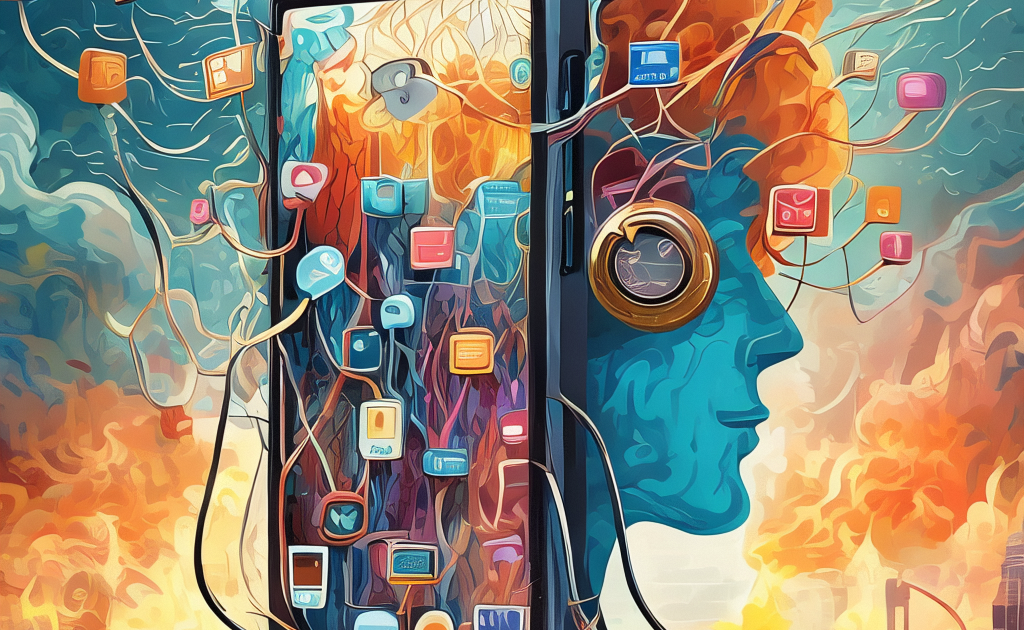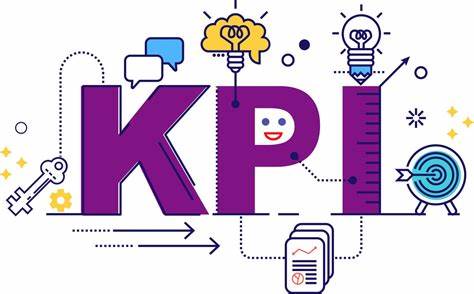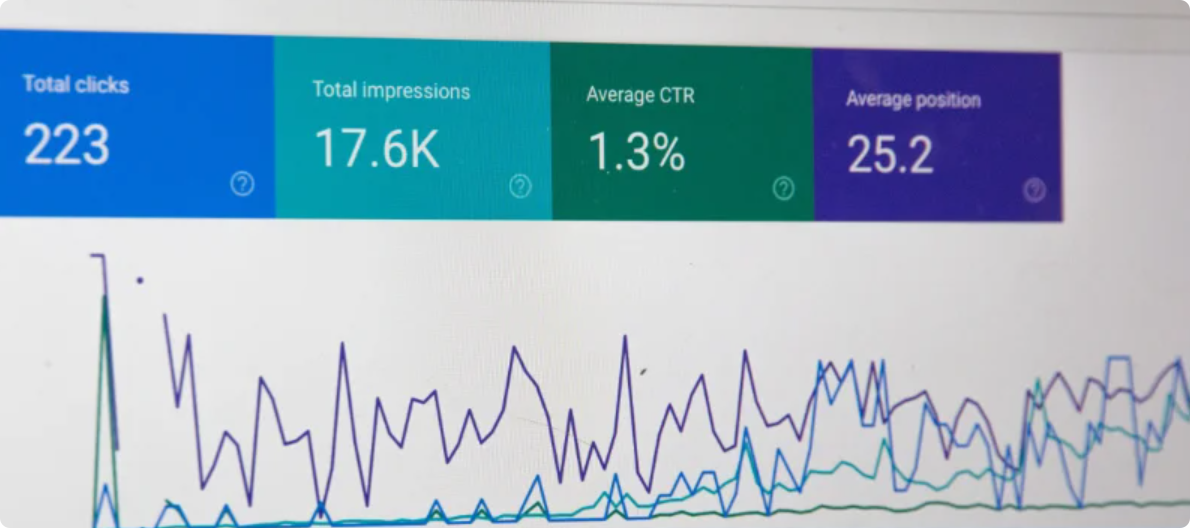The Fusion of AI and AR: Transforming Industries and Redefining Reality
In today's digital age, artificial intelligence (AI) and augmented reality (AR) are not just concepts from science fiction novels; they have become integral components across various industries. The integration of AI and AR is driving innovation and change, redefining how we interact with technology. Imagine a world where technology seamlessly blends with reality, where digital experiences are indistinguishable from the physical world. The fusion of artificial intelligence (AI) and augmented reality (AR) is sparking new possibilities, turning imagination into reality.
AI (artificial intelligence) and AR (augmented reality) are two crucial concepts in modern technology, each with its own characteristics and applications, yet they are interconnected in certain aspects.
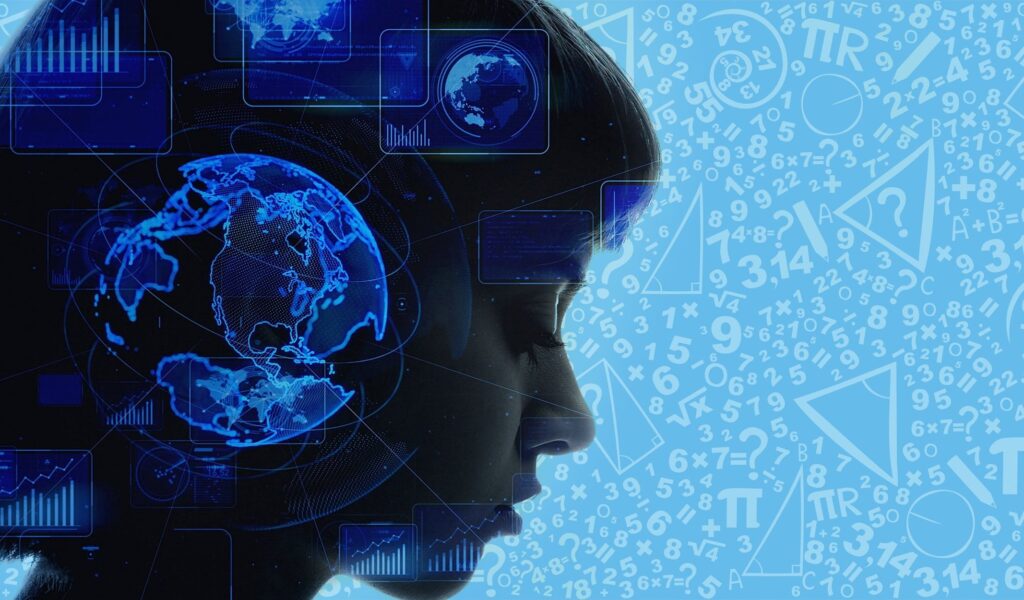
• AI (Artificial Intelligence): AI refers to intelligent behavior achieved through computer systems, aiming to mimic human intelligence, including capabilities such as learning, reasoning, pattern recognition, etc. AI is widely applied in various fields, such as speech recognition, image recognition, natural language processing, etc.
• AR (Augmented Reality): AR is a technology that overlays virtual information onto the real world, combining virtual content with the real environment to create an enhanced reality experience. AR technology is commonly used in mobile applications, head-mounted displays, etc., allowing users to see virtual objects interacting with the real environment through screens or glasses.
While we may be familiar with these two concepts, we often confuse similar terms like "AI," "AR," and "VR," unable to articulate their differences and interconnections. They all involve the simulation or enhancement of the real world, and though they each have distinct characteristics and applications, they also intersect and complement each other in certain aspects. AI enables machines to learn and think like humans, reshaping various industries, while AR overlays digital information onto physical environments, thereby altering our reality experience. While AI primarily focuses on automating tasks to make them more efficient, the combination of AI and AR can create more immersive and interactive experiences.
This article will discuss the integration of artificial intelligence and augmented reality, delving into their synergies across different industries and the growing impact they bring to our world.
The Integration of AI and AR
In today's rapidly evolving digital age, Artificial Intelligence (AI) and Augmented Reality (AR) have emerged as twin titans in the realm of technology. Their integration not only represents a convergence of technologies but also serves as a wellspring of innovation. AI provides intelligent data processing and analytical capabilities to AR, while AR offers more intuitive ways of interaction and real-time environmental contexts to AI. Together, they complement each other, amplifying their respective strengths.
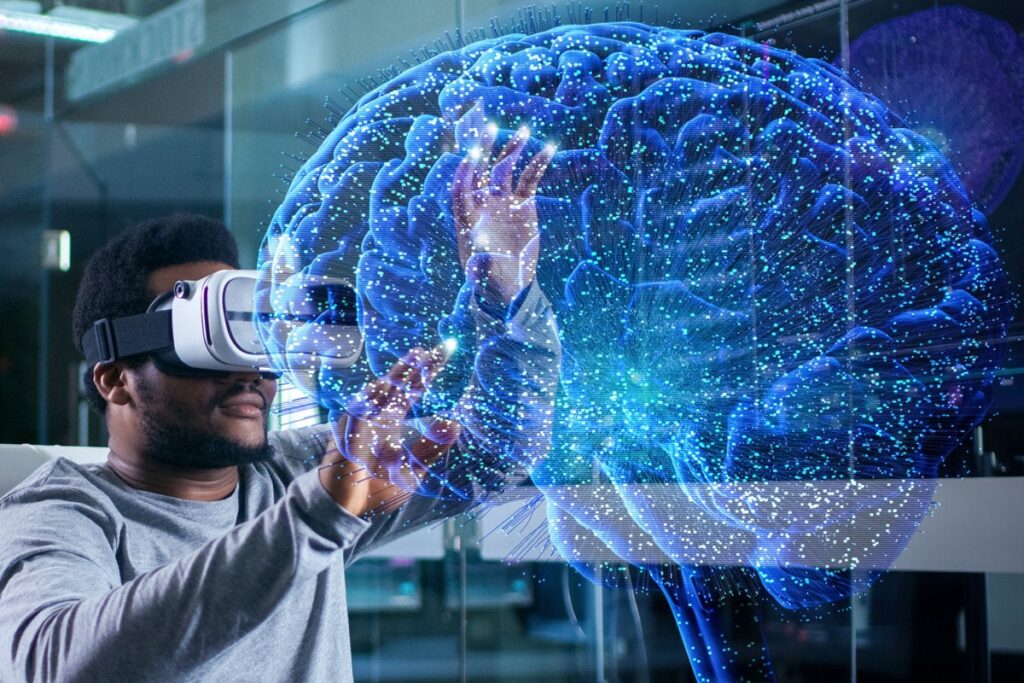
From personalized shopping experiences and immersive gaming to enhanced healthcare and transformative education, the integration of AI and AR is reshaping how we experience and interact with technology. On one hand, AI enhances AR experiences through its intelligent algorithms, offering real-time object recognition, natural language processing for seamless voice commands, and personalized adaptive content. On the other hand, AR enhances data analysis by visualizing insights generated by AI, facilitating spatial mapping for enhanced data interpretation, and improving human-computer interaction through immersive overlays.
AI-driven object recognition is a critical area within AR, enriching the AR experience by accurately identifying objects in real-time visual data. AI-powered AR can precisely identify and track objects in the real world, making it suitable for gaming, retail, and navigation. Personalization is also a key area of synergy between AI and AR, as AI can analyze and understand user environments, preferences, and behaviors to customize AR content, ensuring that each user receives an experience tailored to their individual needs and interests. For example, AI-driven AR language learning applications can adjust content and difficulty based on users' learning pace and proficiency, providing a more personalized learning experience.
Immersive storytelling is a hallmark of AR, and with the integration of AI, this narrative capability is further enhanced. AI algorithms can analyze vast amounts of data in real-time, rapidly generating dynamic and context-aware narratives that adjust storylines based on user choices and interactions, thereby enhancing the immersive and engaging nature of storytelling experiences.
The integration of AI overcomes a range of challenges faced by AR technology. For instance, in object recognition and tracking, AI endows AR systems with real-time object recognition and tracking capabilities through advanced computer vision techniques, enhancing the fusion of virtual elements with the physical environment. Additionally, AI's natural language processing capabilities enable AR systems to understand and interpret user commands, achieving a more natural and intuitive interaction experience. By leveraging machine learning, AI also enables AR systems to provide personalized experiences based on user needs, deepening the resonance between users and content.
The fusion of AI and AR paves the way for a future where digital and physical realities seamlessly coexist, fundamentally transforming how we interact with the world around us.
AI and AR Across Various Industries
Healthcare Sector
In the healthcare sector, the integration of AI and AR is fostering numerous innovations. Intelligent analysis of medical images, real-time guidance for surgical procedures, and virtual reality-based rehabilitation training have all become possible. AR technology allows doctors to preview and plan procedures before surgery, providing real-time guidance and feedback. AI algorithms analyze medical images and patient data to offer precise diagnostics and treatment recommendations. AR-assisted surgery and real-time AI analysis not only enhance precision and diagnostic capabilities but also expand the scope and depth of medical services, reducing risks and recovery times for patients, thereby providing them with a better treatment experience.
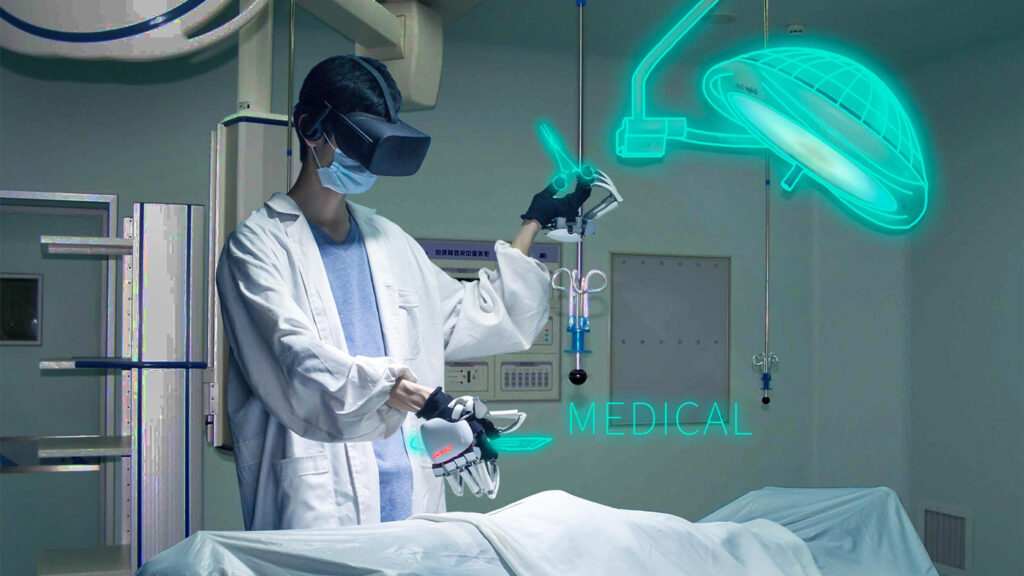
Education Sector
AI and AR are transforming the education sector. AI can provide personalized learning paths and recommendations based on students' learning progress, promoting comprehensive development and creating enhanced learning environments. AR can enhance learning by providing interactive 3D models, historical reconstructions, and immersive simulations. Students can immerse themselves in learning through technology, interact with virtual objects, and better understand knowledge. This combination is expected to fundamentally change the way education and training are conducted, turning traditional classrooms into dynamic, personalized learning spaces.
Google Skymap is a typical example. It combines AR and AI technologies, allowing users to explore and identify celestial bodies in the night sky. Using AR technology, it overlays real-time views of stars, planets, and constellations on the device screen, creating an interactive and immersive stargazing experience. AI algorithms analyze captured images and identify celestial bodies in real-time, providing users with valuable knowledge and insights. This integration makes astronomy more accessible and engaging.
Manufacturing Industry
AI-driven augmented reality can help manufacturing workers by overlaying instructions, schematics, and safety information onto machinery and workspaces. This improves production efficiency, reduces errors, and enhances workplace safety. AI can recognize and track objects in the real world, enabling seamless interaction with physical objects in AR applications. Additionally, AI's data processing and intelligent decision-making capabilities make AR applications more efficient. The combination of augmented reality and artificial intelligence provides real-time guidance and data visualization for industrial maintenance tasks, reducing errors and improving efficiency.
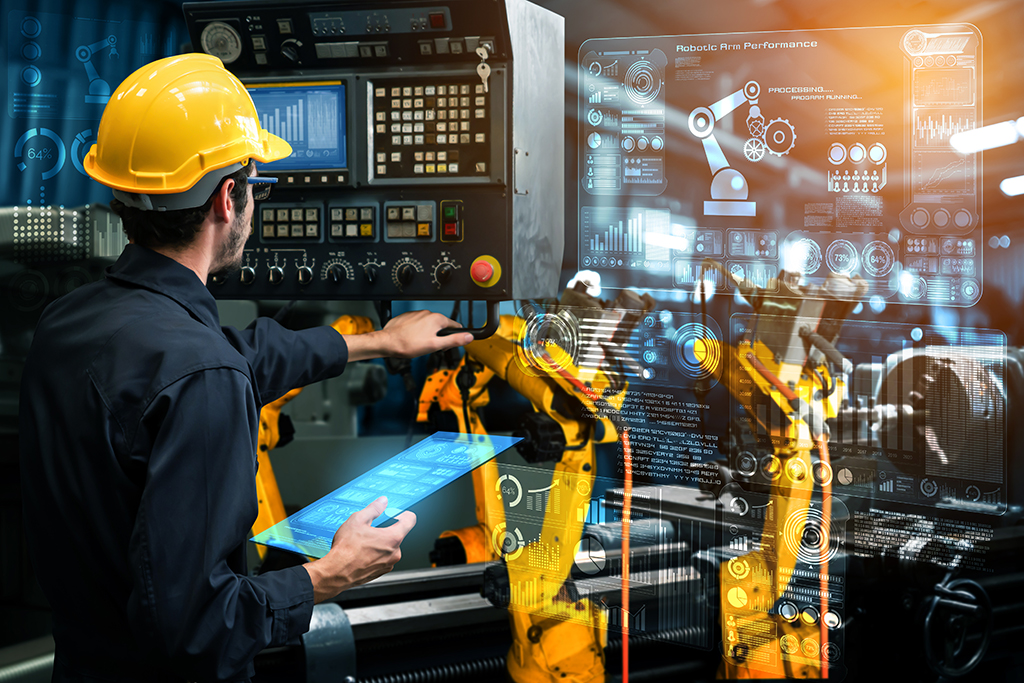
Retail Sector
In the retail industry, the combination of AI and AR is reshaping the consumer shopping experience. Through augmented reality technology, consumers can try on clothes and experience products in virtual reality, gaining a more intuitive understanding of product features and suitability. Meanwhile, artificial intelligence can recommend personalized products based on consumers' shopping history and preferences, enhancing shopping satisfaction and efficiency. The IKEA Place app utilizes augmented reality technology to allow users to try furniture and home decor products in their homes. By overlaying digital models onto real-time camera views, IKEA Place allows users to preview and position furniture in their physical spaces, allowing them to see if the product's appearance and size match their home decor style. This integration not only provides a more immersive shopping experience but also offers personalized recommendations to consumers. AI algorithms analyze consumers' shopping history, preferences, and behaviors to provide customized shopping suggestions, helping them make wiser purchasing decisions.
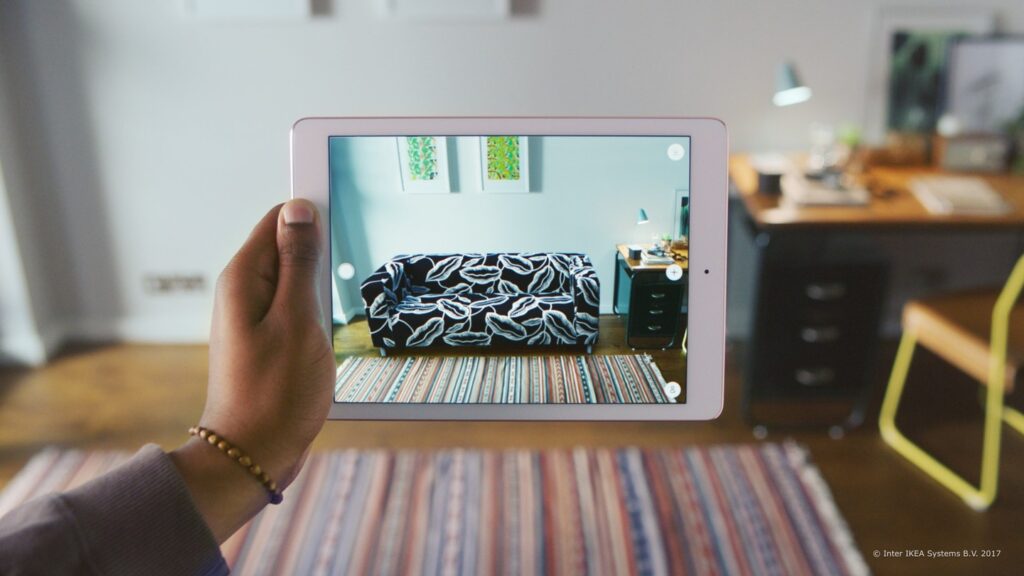
Entertainment
Integrating AI into different industries has led to significant advancements and is reshaping how we work, live, and entertain ourselves. The gaming and entertainment industries have witnessed the transformative potential of AI and AR. AI algorithms providing intelligent characters with realism and emotion, as well as objects indistinguishable from reality, allow players to establish closer connections. Popular games like "Pokémon Go" and "Harry Potter: Wizards Unite" leverage AR technology to overlay virtual characters onto real-world environments, providing unique and engaging gaming experiences. This exemplifies the impact and widespread adoption of augmented reality. Meanwhile, AI-driven chatbots, such as ChatGPT, can understand and answer human queries, saving time and improving customer service across industries from e-commerce to healthcare.
The Integration of AI and AR is Reshaping the World
The combination of AI and AR is creating the next level of technological revolution, reshaping our world and our relationship with technology. As this fusion continues to develop, we can expect more intelligent, immersive, and personalized experiences, changing our lifestyles and work patterns.
From smart assistants and personalized shopping experiences to immersive gaming and precision healthcare, the integration of AI and AR is driving innovation and creating a brighter future for us. This technological revolution will continue to lead us towards a digitized and intelligent world, bringing positive changes to our society, economy, and personal lives.

The integration of artificial intelligence into augmented reality holds immense potential across various fields. As these technologies further develop in the future, developers and companies should consider whether they can develop intelligent augmented reality (AR) applications to provide users with personalized, exciting, and useful experiences.


